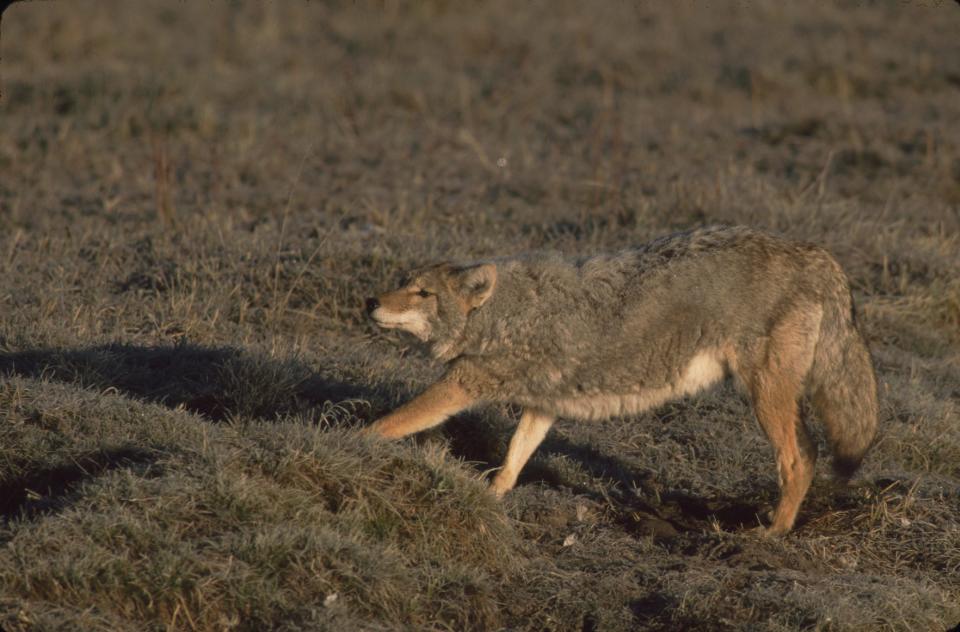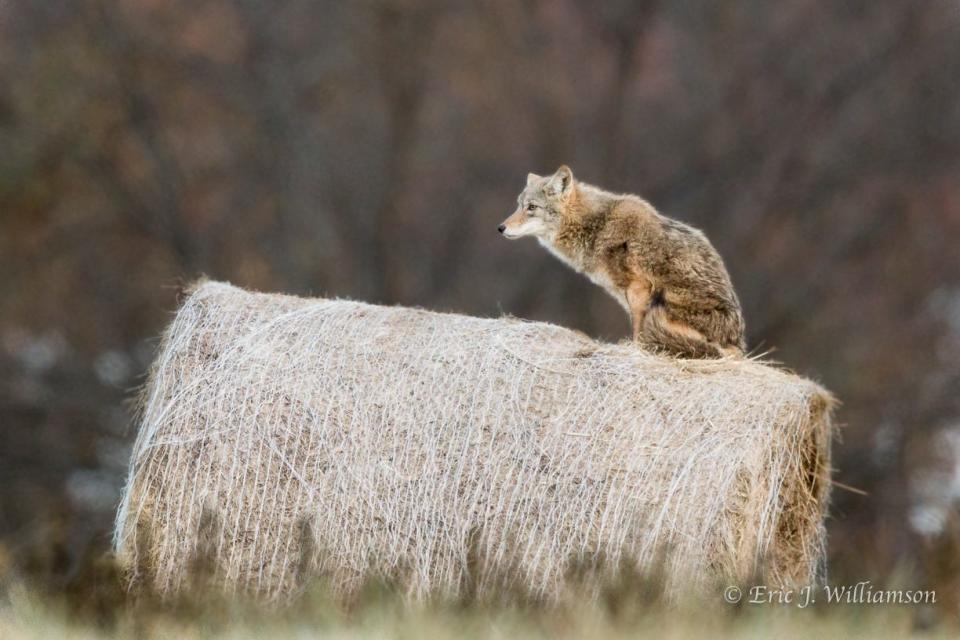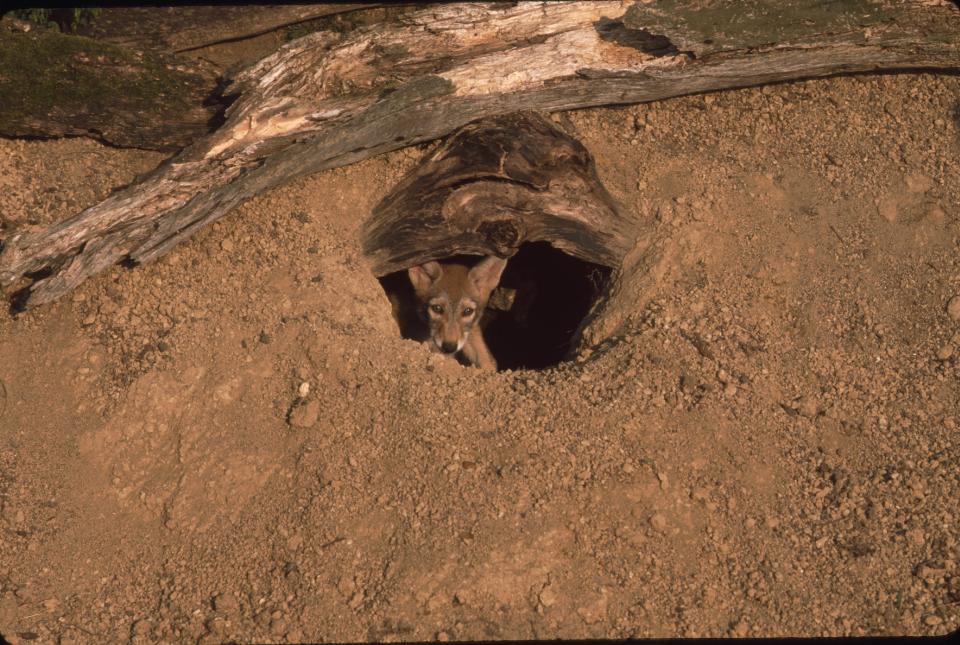Was that a coyote I saw? In Urbandale, it's very possible. Here's what you should know
As the Des Moines metro expands and moves into rural areas, the likelihood of humans running into native wildlife increases — including coyotes.
"We have a lot of great timber areas within Urbandale, beautiful creeks, greenways and stuff, which is ideal for them," said Scott Hock with the Urbandale Parks and Recreation Department. "I think they've always been here, but this time of year we see an increase in activity due to the mating season."
The current season means someone living in an area where coyotes are present may spot one. Educating the public on how to behave if they run into a coyote is very important.
"They are part of the natural landscape here, so we want to make sure people are aware of them," Hock said.
What to know about coyotes

Coyotes are very adaptable and good at living in close proximity with people. Given that it is their mating season, there is a chance they could be more active, territorial and aggressive, especially as food resources may become more scarce, according to Andy Kellner, wildlife biologist at the Iowa Department of Natural Resources.
That said, coyotes for the most part still have a healthy fear of humans and tend to be more active at dawn, dusk or nighttime. A coyote spotted in the daytime is also not an immediate cause for concern in this season, though if it becomes more common it's advised to report the situation.
"Just the chance of seeing a coyote isn't something to be scared of or anything," Kellner said. "It's good to be aware of so you know coyotes are in the area, but it's nothing to necessarily fear right off the bat."
Are my pets safe from coyotes?
It is important for pet owners to keep their animals on leashes and under supervision when they are in the yard at night, even if there's a fence in place.
"If you see a coyote that's kind of holding its ground and it's out during the day and you think 'this is in a spot where it really shouldn't be, and it's being too comfortable around us,' that’s when I advise people to take the opportunity to train the coyote to be wild,” Kellner said.
Even if a homeowner has a 5-foot to 6-foot fence to protect their pets, Kellner said you can buy a coyote roller, an addition put on top of the fence roughly 2 inches in diameter so that an animal’s paws can’t get on top to use it as leverage.
If you come across a coyote while walking your dog, keep your pet close to you, and if it’s smaller than 15 pounds, pick it up and hold it in your arms as you then haze the coyote.
Do not let the dog engage with the coyote.
How do I 'train' a coyote to be wild?

Coyotes are similar to canines in that they can be “trained” on behaviors through what’s known as hazing, said Kellner.
“Anybody who’s been a dog owner realizes that when you’re training your dog, you can’t ask it, you can’t phrase it as a question,” Kellner said. “Speak firmly and with authority."
Here's what you need to do:
Make yourself big, raise your arms in the air or wave an object in your hand.
Make loud noises by yelling or shaking a can of coins.
Stomp your feet on the ground.
Throw a stick in its direction.
Spray them with a garden hose.
Do not chase the coyote.
Do not haze a coyote if it appears injured/sick, cornered or with pups.
How to prevent coyotes from getting too close
Even though coyotes mostly eat rodents, rabbits and squirrels, they’re going to take advantage of pet food left outside, or compost bins with inappropriate items such as deli meat or dairy; even grains from bird feeders left on the ground, Kellner said.
“Doing anything to limit the food resources and limit that availability is really important,” Kellner said. “In urban areas, there’s a lot of people who are concerned about cats and things like that, they’re putting food out for them, and I take a strong stance against that.”
Putting any sort of food out will not just attract coyotes, Kellner said, but raccoons, skunks and possums. If you do feed an animal outdoors, make sure not to leave any remnants behind.
What are coyotes' social behaviors?

A coyote pack is a family group, where the pups stay for a year. There are two mating adults known as the alphas, Kellner said, and they are the leaders of the pack and the only ones who reproduce. The rest are kids from the previous year.
“It’s a tight social network, and they’re really territorial canines towards other canines and predators,” he said. “If a coyote family has an established area, they tend to keep other coyotes out.”
Removing a pack of coyotes from the area is not the solution, because another pack is likely to move into the territory, and they may cause trouble the others didn't, Kellner said.
"Anybody who lives with more than one dog can tell you they do learn from each other, and that's how those pups are raised is by following the adults and mimicking what they do," he said. "If there's a disruption in that social structure and those pups aren't raised the same, they might not know how to act towards people."
Coyotes have something called compensatory reproduction, meaning if they feel lethal pressure, the pack can split and create splinter groups that would then create more litters to reestablish the pack elsewhere, increasing the number of coyotes in the long run.
Who to contact if an interaction happens
If you do have an interaction with a coyote, reach out to the city.
Be sure to report if there are frequent sightings during the day, which might be a sign of a more habituated coyote.
If a coyote is acting too aggressively or is too used to people, that's when the city talks with residents in the area if additional action is necessary, such as killing the animal, Kellner said.
If you come into an uncomfortable encounter with a coyote and want to report it, call Hock at the Urbandale Parks and Recreation Department at (515) 331-6799.
Noelle Alviz-Gransee is a breaking news reporter at the Des Moines Register. Follow her on Twitter @NoelleHannika or email her at NAlvizGransee@registermedia.com.
This article originally appeared on Des Moines Register: What to know about the increasing numbers of coyotes in Urbandale

